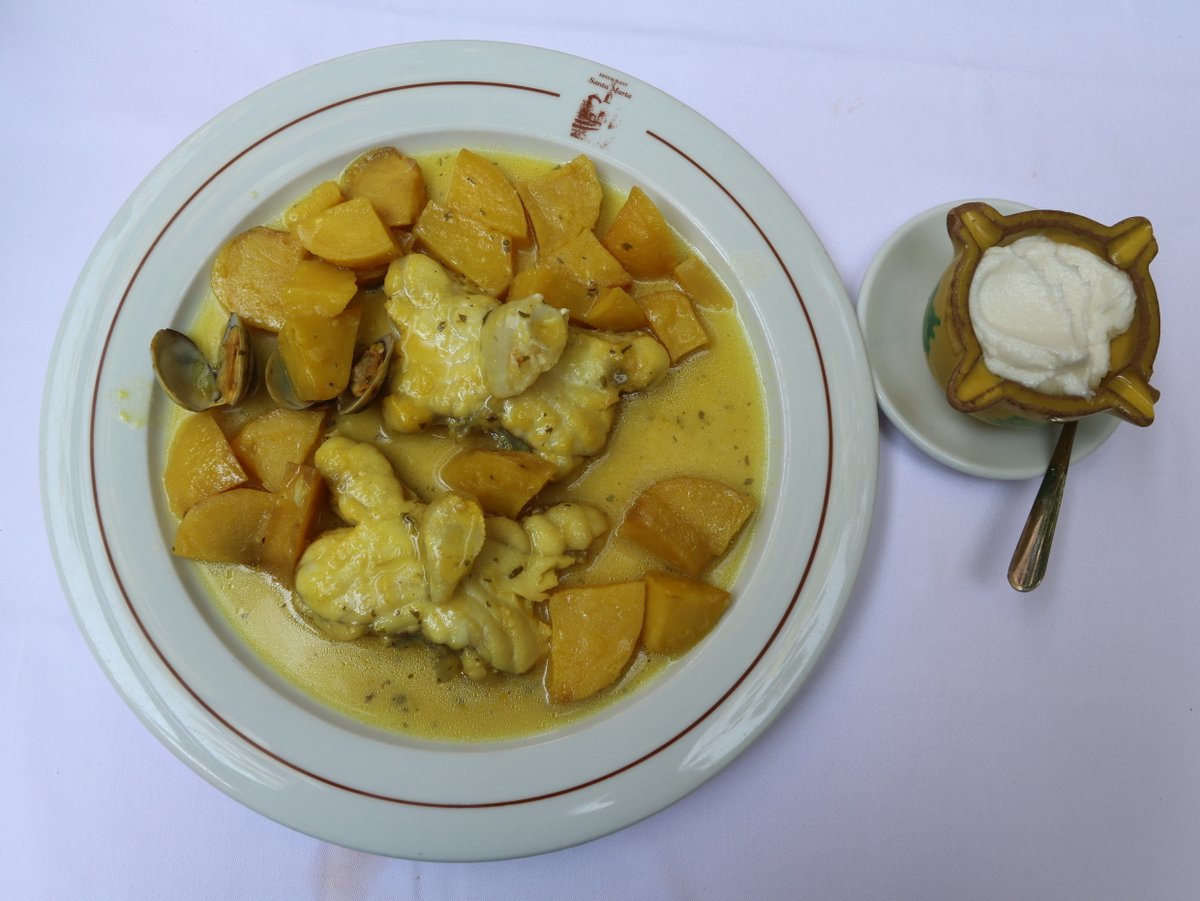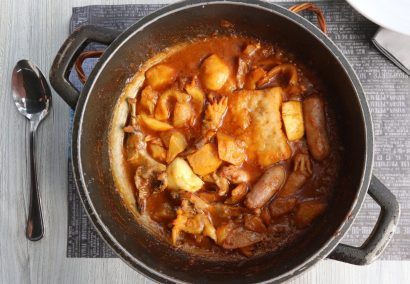In the old days, Costa Brava fishermen leaving for the open sea were never quite sure how long they would be gone, and so they packed everything necessary for nutritious cooking in the sea. There are countless recipes for high-calorie fish entrees—thankfully, not only were some of them preserved and remembered since the working conditions of fishermen improved but many also became the pride and the claim to fame for the many resorts that replaced the fishing villages along the Costa Brava.
Every September since 2004, more than a dozen restaurants in Tossa de Mar offer their guests a special menu, the crown jewel of which is called cim-i-tomba. It is an invention of the local fishers who used to cook it aboard their boats in iron pots on portable stoves.
The Cim i Tomba recipe is simple. The bottom of the pot was laid out with onions, bell peppers, tomatoes, cut potatoes and a few garlic cloves. That day’s catch’s undesirables—like defective fish or simply less popular fish varieties—were cut into large pieces and put into the pot over the vegetables, drizzled with olive oil, covered with water and left on the stove to cook. While the contents of the pot were cooking, garlic and olive oil were crushed in a mortar to make aioli which was then spread over the cooked fish and left to stew on the heat for a few more minutes.
Cim means “top” or “up” in Catalan, while tomba is translated as “to turn over”. The first word apparently refers to the arrangement of the ingredients; the second is related to the way aioli is mixed with the stock, as the pot was usually held up and rotated from left to right to achieve optimal blending. Another way to explain the name was with the presence of the second pot in the equation where the contents of the first pot were poured and then returned to the original one for better mixing.









